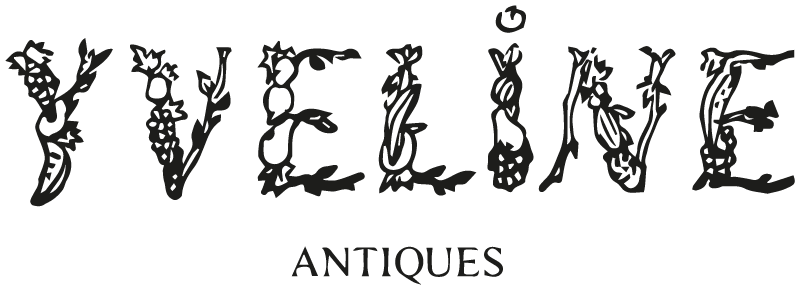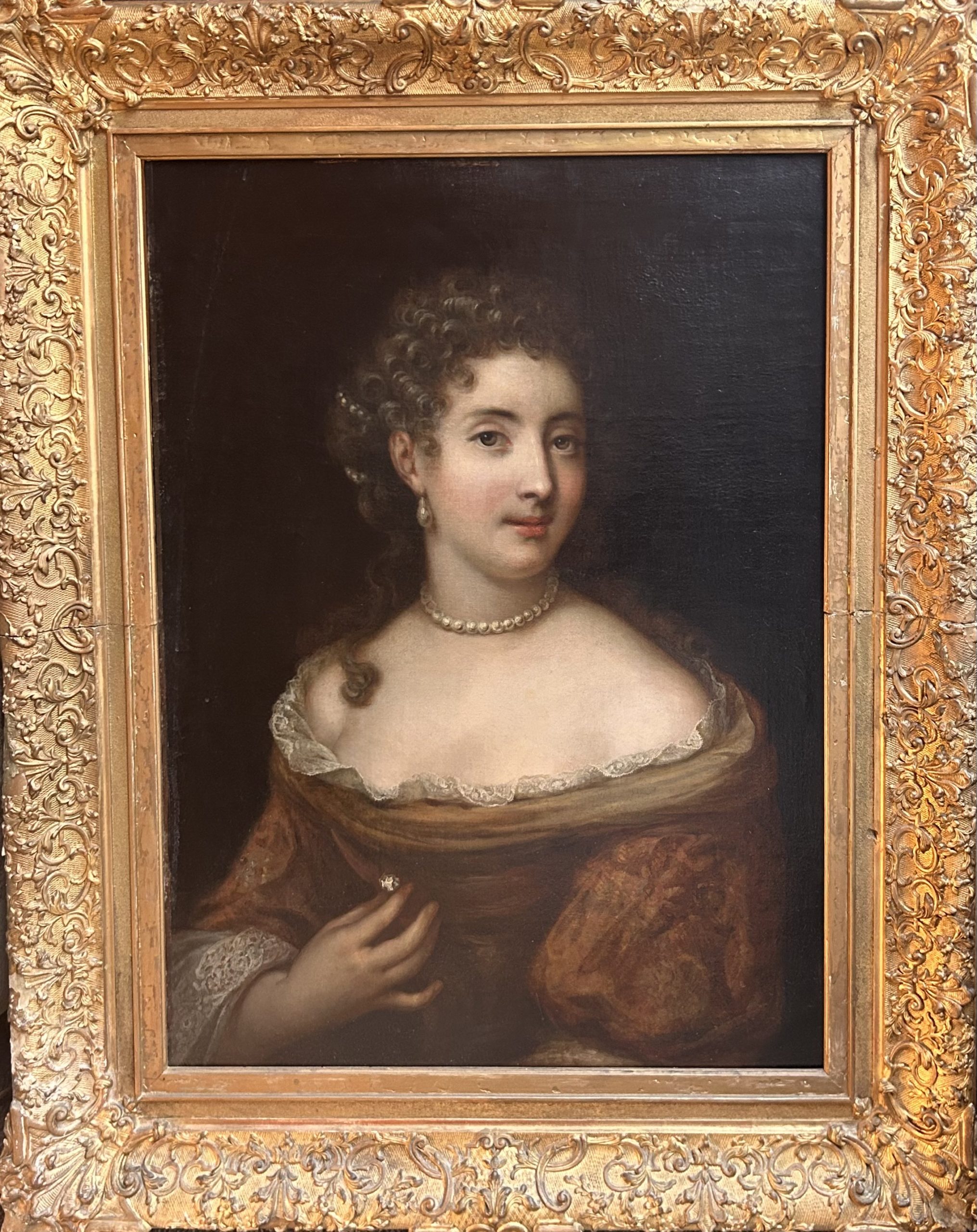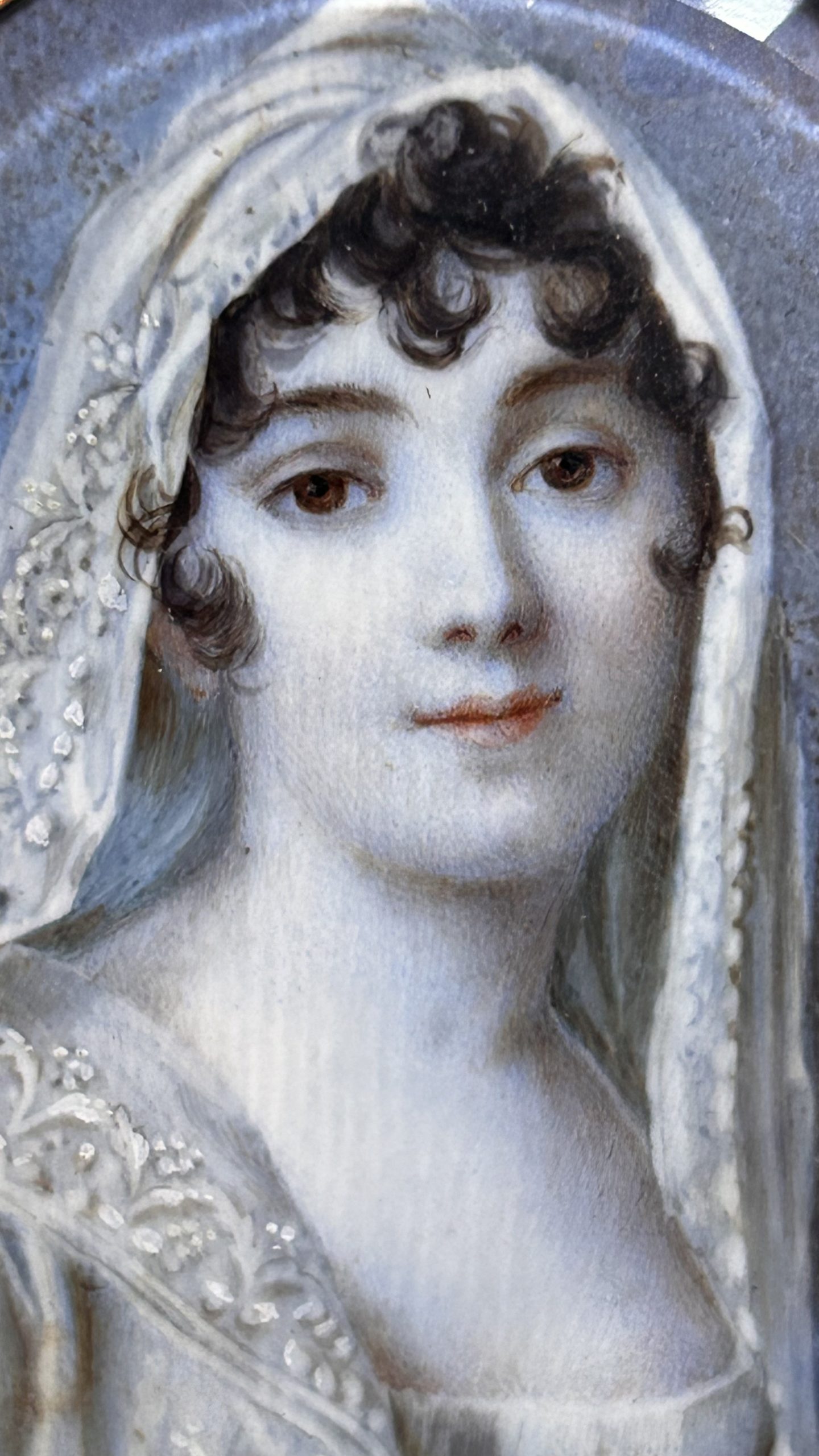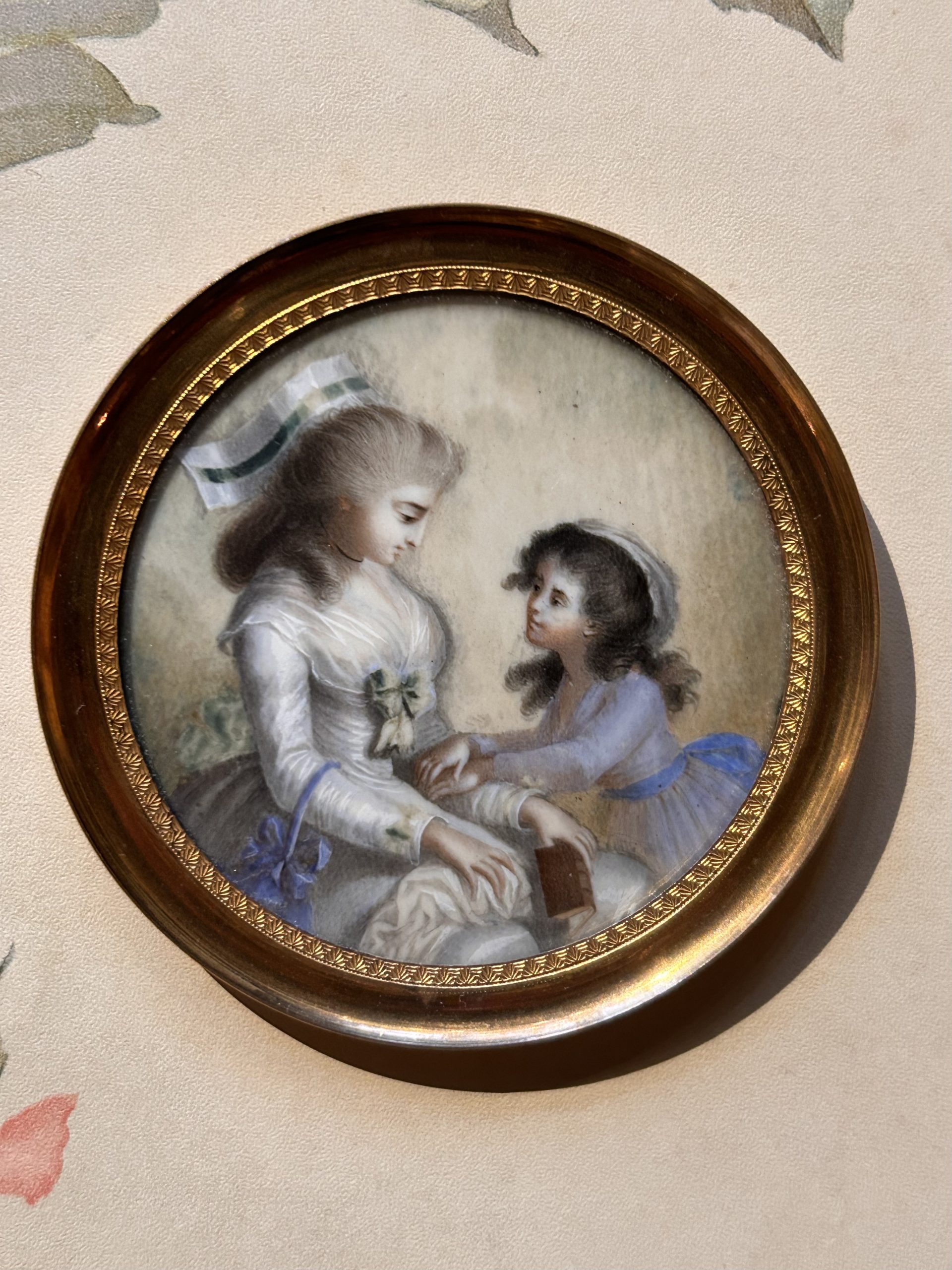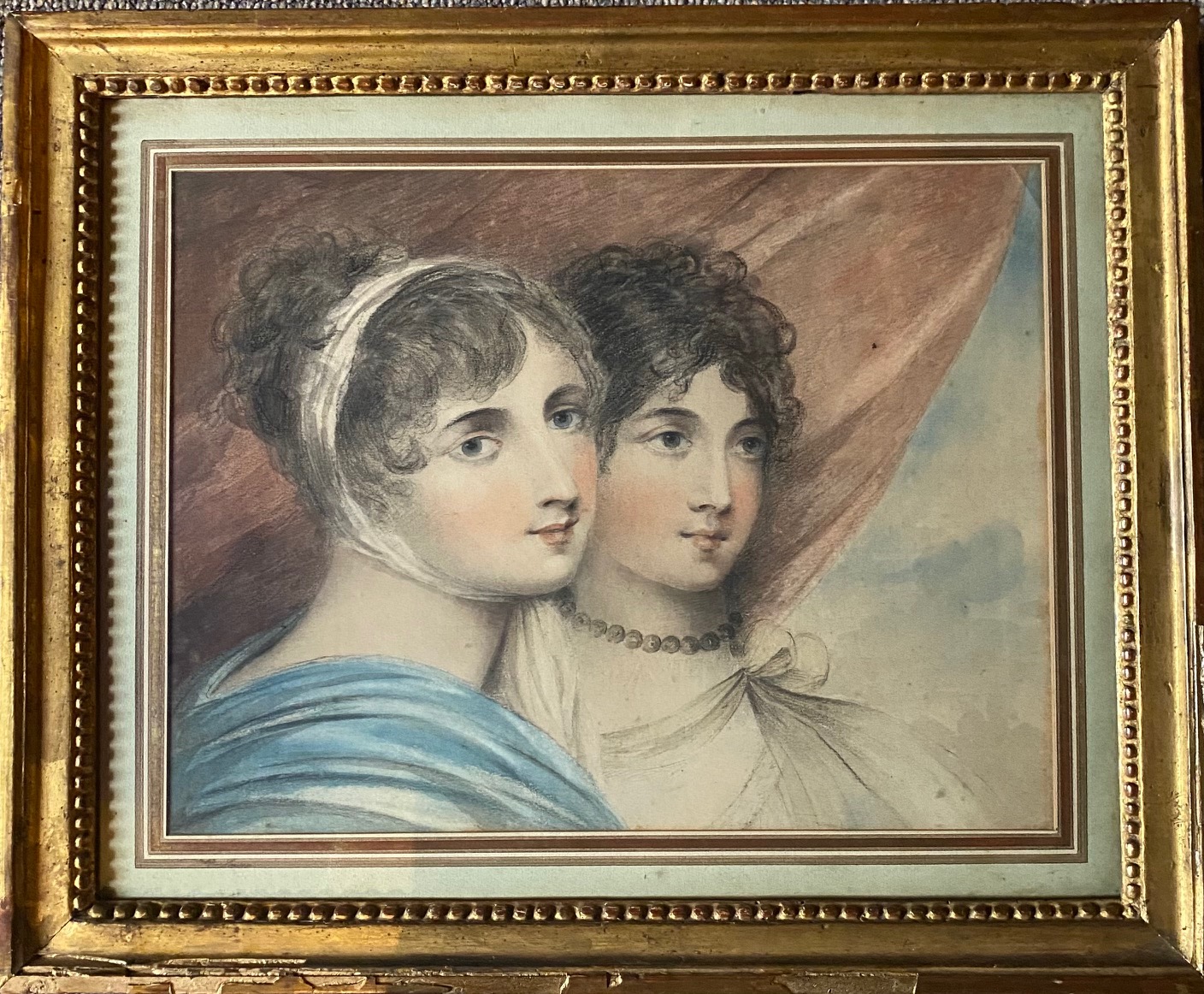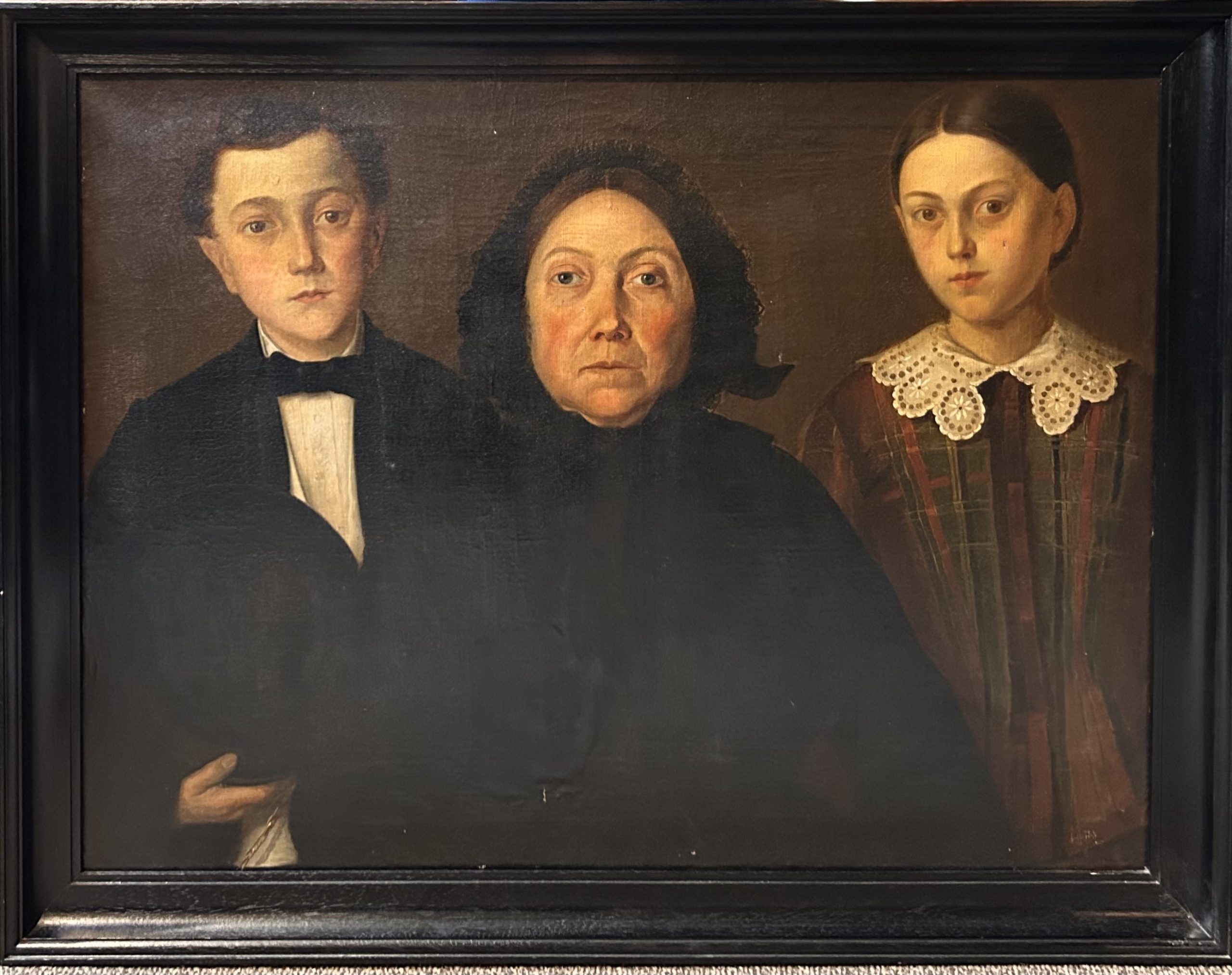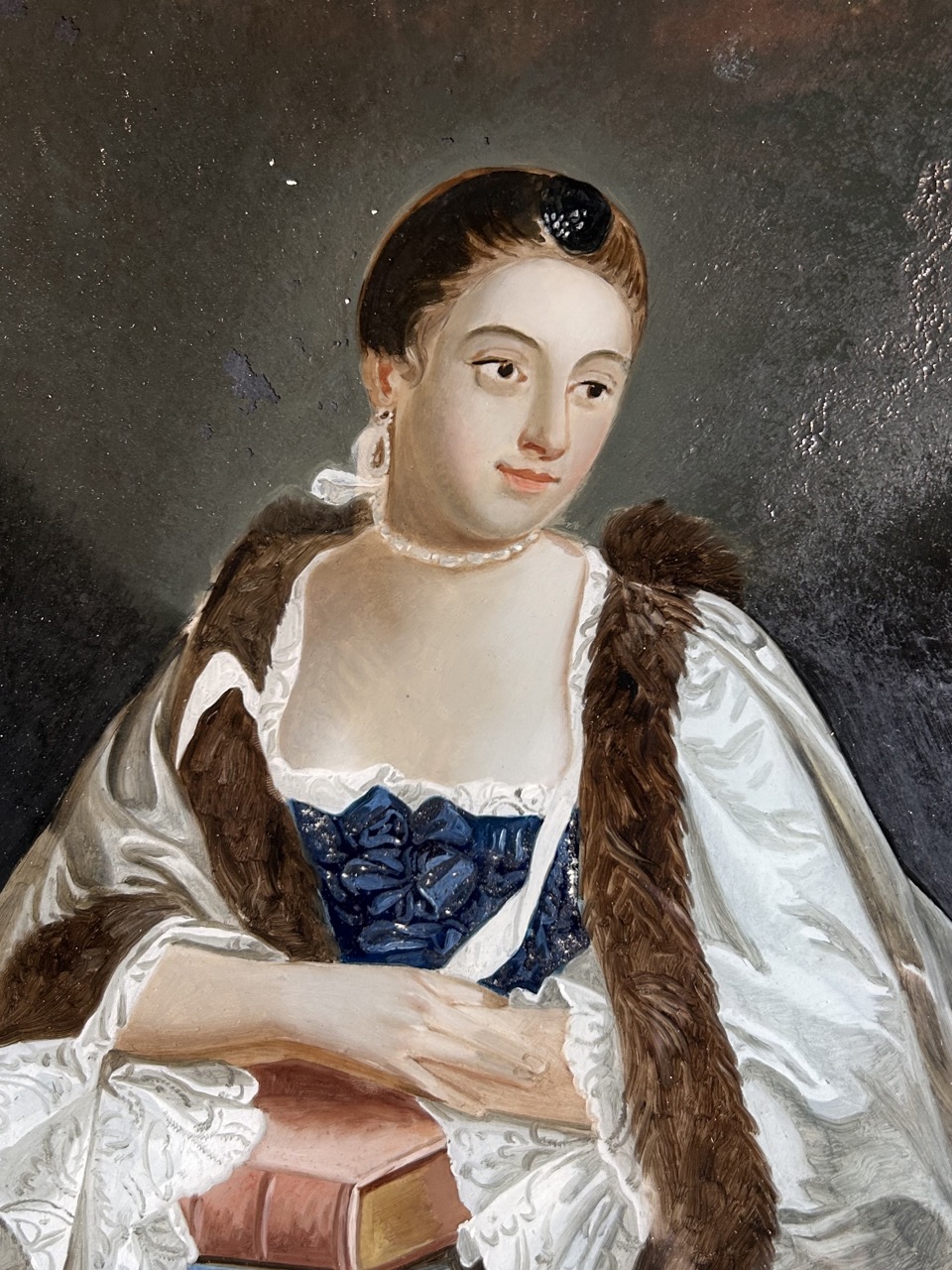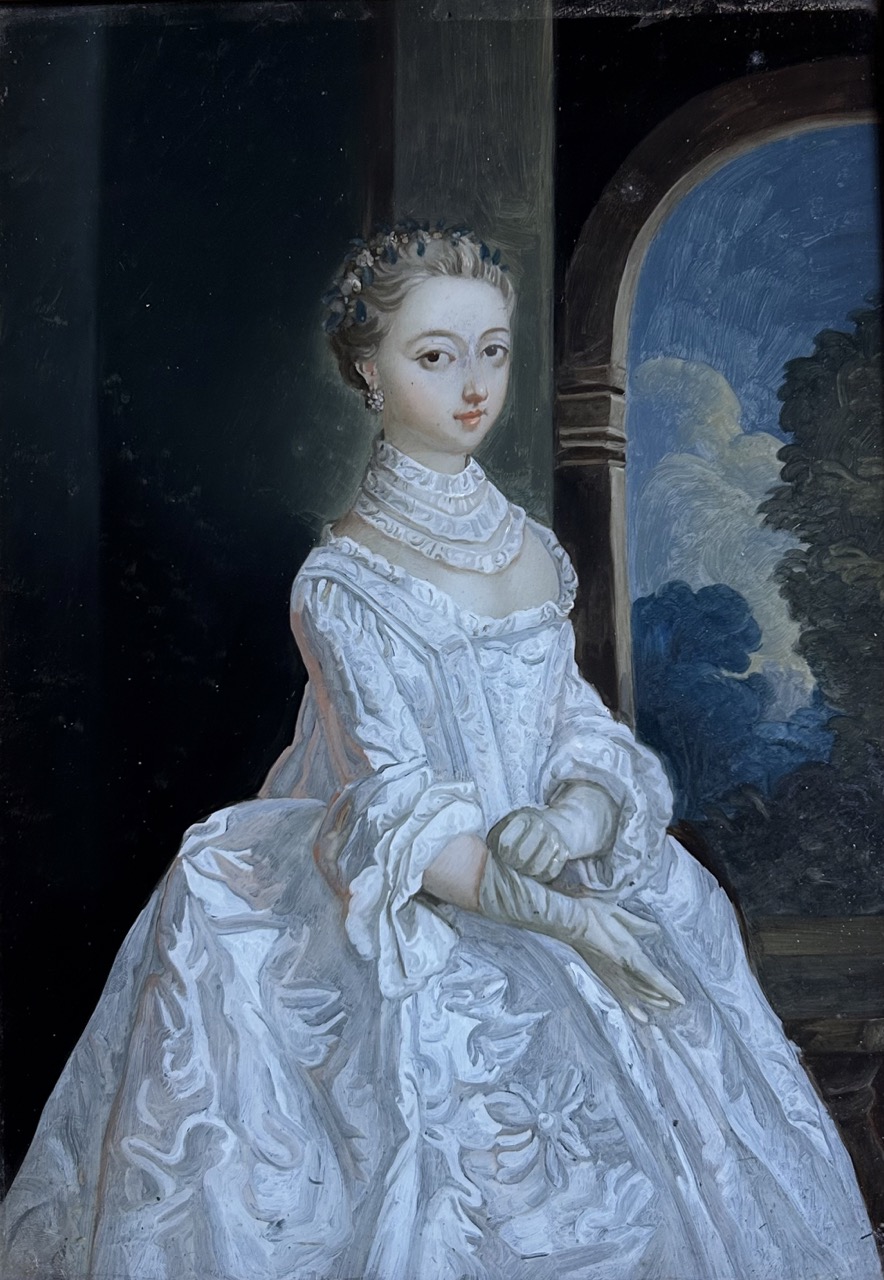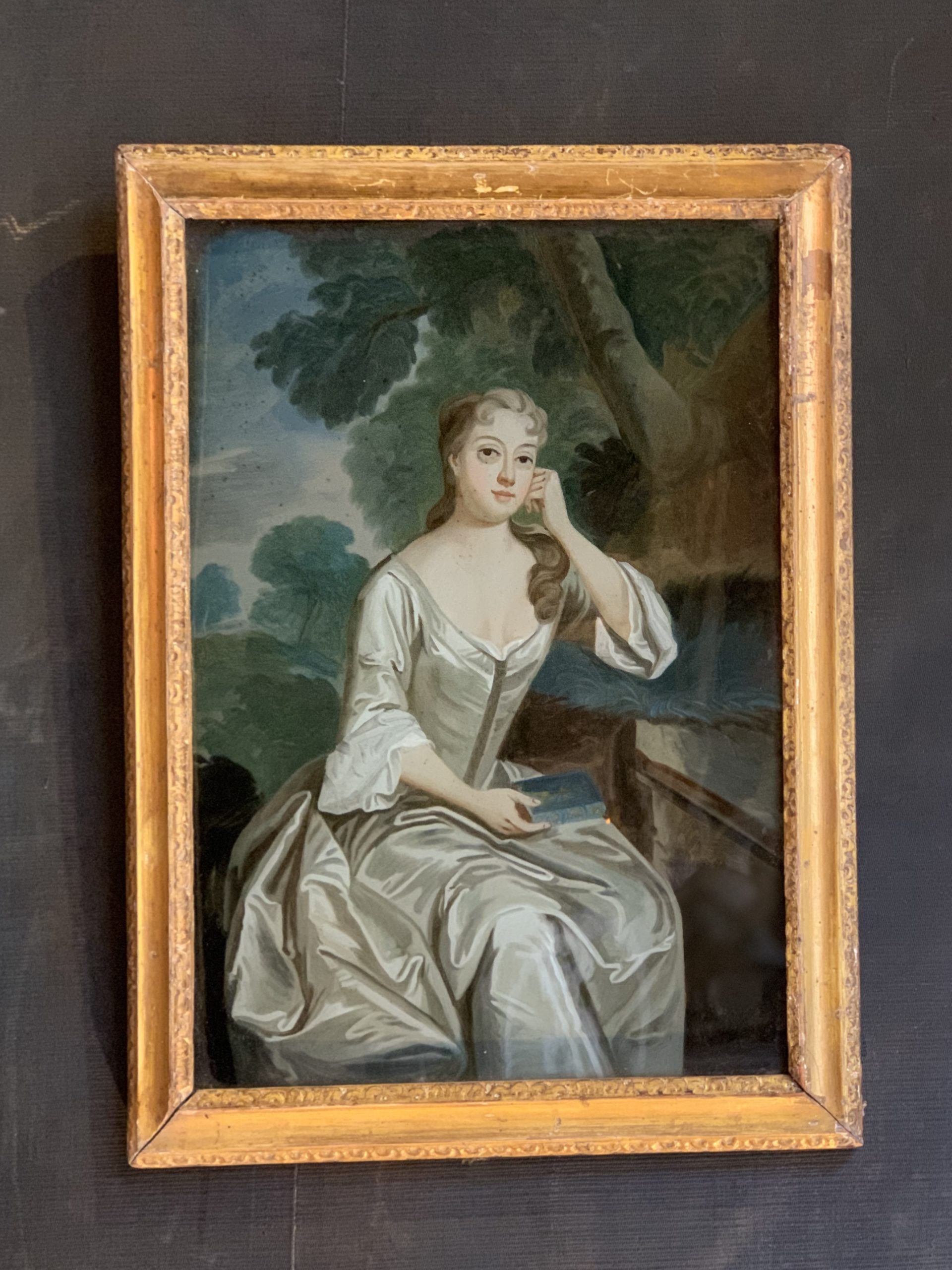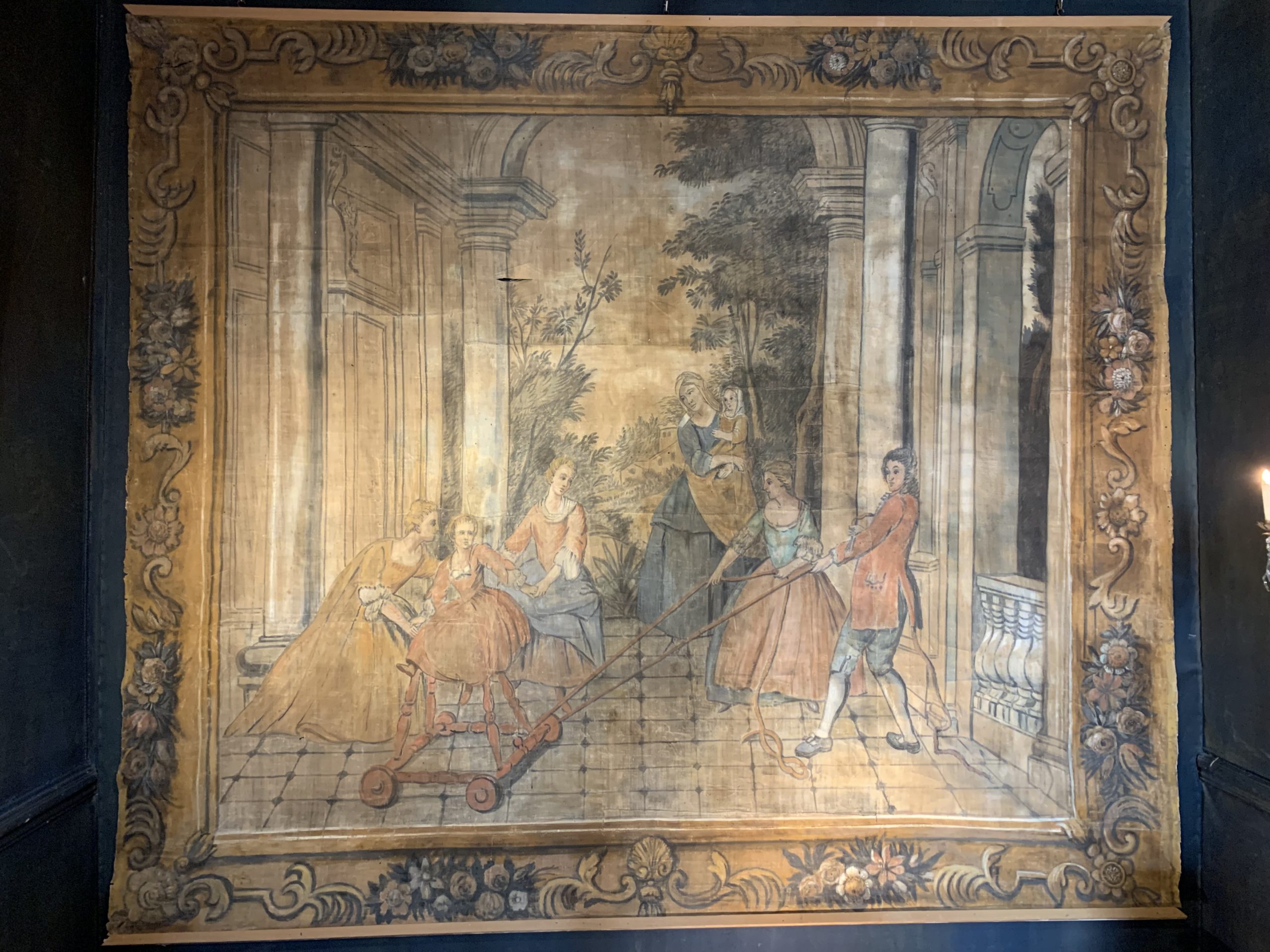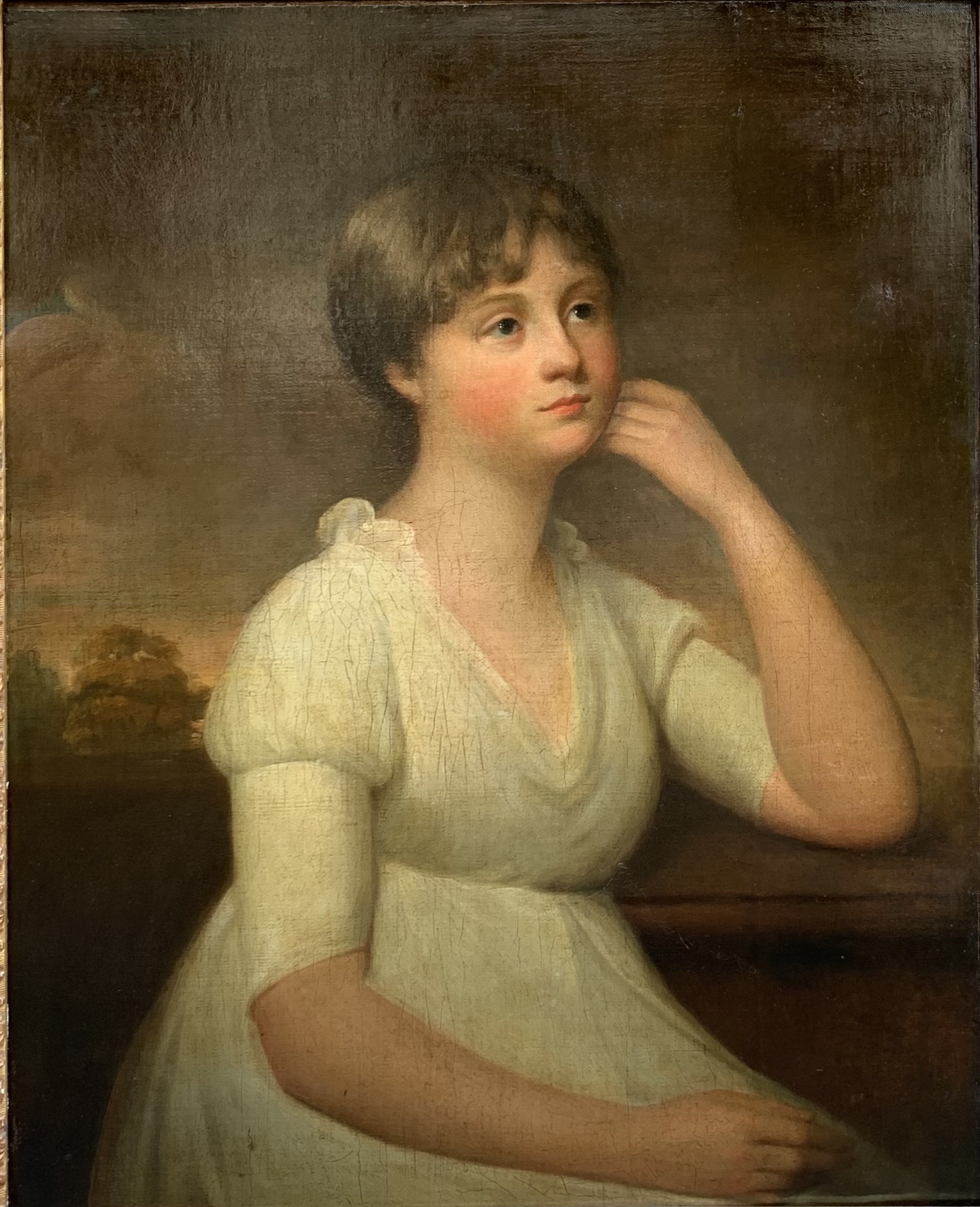«Portrait of a diamond woman», XVIII s.
Oil on canvas depicting a woman dressed in the hurluberlu at the Anne-Marie d’Orléans (sister of Philip II of Orleans the Regent) decorated with pearls and holding a diamond.
Is the woman in our portrait the Regent’s favorite or perhaps the very personification of the Regency time.
Height with frame: 99 cm
Width with frame: 79 cm
France
Period: XVIII century, Regency
Miniature on ivory “Portrait of a veiled young woman” mounted in brooch, vermeille frame, bevelled glass protection,
signed Jean-Urbin Guérin, French draftsman and miniature painter (1760-1836).
Early 19th century
France
“Mother and daughter”, oval miniature painted in gouache on ivory in an oval hoop to hang in gilded bronze.
Around 1780
Watercolor and pastel on paper representing two young girls
Empire period, early 19th century
France
Oil on canvas “Family portrait”, painted wooden cardre.
The dark clothes of the woman and children, although enhanced with white lace collar and shirt, refer to the recent mourning probably of the wife’s husband.
XIX century,
English school
Painting under glass is a difficult artistic technique that is executed directly on a sheet of glass. The glass supports the paint like a canvas. Thus the glass serves both as a support and as a protective varnish. It is a “cold” painting technique so the process does not require baking. The pigment is bound to the glass by an oily vehicle most often based on varnish.
Painting under glass is a difficult artistic technique that is executed directly on a sheet of glass. The glass supports the paint like a canvas. Thus the glass serves both as a support and as a protective varnish. It is a “cold” painting technique so the process does not require baking.
Painting under glass is a difficult artistic technique that is executed directly on a sheet of glass.
The glass supports the paint like a canvas. Thus the glass serves both as a support and as a protective varnish. It is a “cold” painting technique so the process does not require baking.
Painted canvas “Game scene”
End of the 18th century.
France
Oil on canvas of a young English girl.
Portrait on landscape background.
English school
First part of the 19th century
